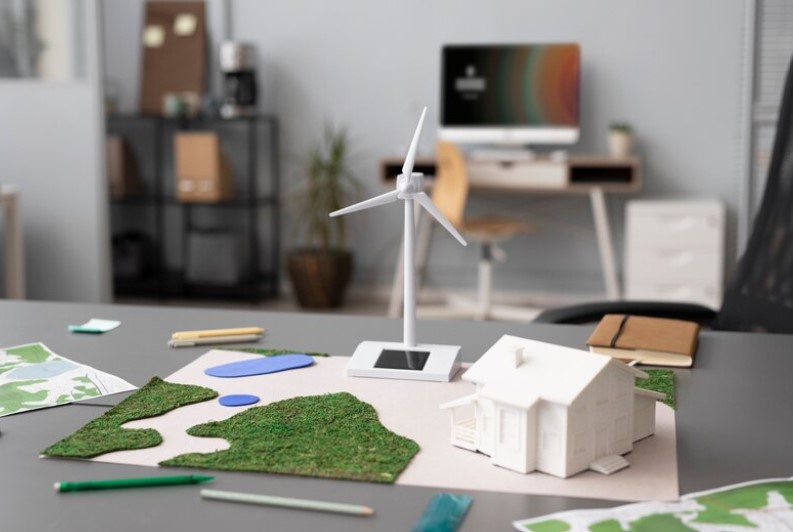In recent years, there’s been a growing awareness of the impact our homes have on the environment. As a result, more and more people are turning to sustainable home building practices. This approach not only helps reduce our carbon footprint but can also lead to long-term cost savings and a healthier living environment.
In this comprehensive guide, we’ll explore eco-friendly materials and practices that can make your home more sustainable, from the foundation to the roof.
Sydney Home Builders: Leading the Way in Sustainable Construction
Top-rated Sydney home builders are at the forefront of sustainable construction practices in Australia. Many have embraced eco-friendly building methods and materials, recognizing the long-term benefits for both homeowners and the environment.
These builders are skilled in integrating sustainable features into homes without compromising on style or comfort. When choosing a builder for your sustainable home project in Sydney, look for those with experience and certifications in green building practices.
Eco-Friendly Building Materials
Recycled Steel
Recycled steel is an excellent alternative to traditional wood framing. It’s durable, resistant to pests, and can be recycled again at the end of its life. Using recycled steel reduces the demand for new steel production, which is energy-intensive and contributes to carbon emissions.
Sustainable Wood
If you prefer wood, opt for sustainably sourced timber certified by organizations like the Forest Stewardship Council (FSC). This ensures the wood comes from responsibly managed forests. Alternatively, consider reclaimed wood, which adds character to your home while reducing demand for new timber.
Bamboo
Bamboo is a fast-growing, renewable resource that can be used for flooring, cabinetry, and even structural elements. It’s durable, attractive, and has a lower environmental impact compared to many traditional materials.
Recycled Glass
Recycled glass can be used in countertops, tiles, and even as a component in concrete. It’s a great way to reduce waste and create unique, beautiful surfaces in your home.
Natural Insulation
Instead of fiberglass, consider natural insulation materials like sheep’s wool, cotton, or cellulose (made from recycled paper products). These materials are effective insulators and have a lower environmental impact.
Energy-Efficient Design
Passive Solar Design
Incorporating passive solar design principles can significantly reduce your home’s energy needs. This involves positioning your home and windows to maximize natural light and heat in winter while minimizing heat gain in summer.
High-Performance Windows
Invest in double or triple-glazed windows with low-E coatings. These windows provide better insulation, reducing heat loss in winter and heat gain in summer, which can lead to significant energy savings.
Proper Insulation
Ensure your home is well-insulated, including walls, floors, and roofs. Good insulation is key to maintaining a comfortable temperature year-round with minimal energy use.
Cool Roofs
Consider a “cool roof” made of materials that reflect more sunlight and absorb less heat than a standard roof. This can help reduce cooling costs and extend the life of your roof.
Water Conservation
Rainwater Harvesting
Install a rainwater harvesting system to collect and store rainwater for non-potable uses like toilet flushing, laundry, and garden irrigation.
Low-Flow Fixtures
Use low-flow faucets, showerheads, and dual-flush toilets to reduce water consumption without sacrificing performance.
Greywater Systems
Consider installing a greywater system that recycles water from sinks, showers, and laundry for use in toilets or garden irrigation.
Drought-Resistant Landscaping
Design your garden with native, drought-resistant plants that require minimal watering. This reduces water usage and maintenance needs.
Renewable Energy Systems
Solar Panels
Installing solar panels can help you generate your own clean electricity. With advances in technology, solar panels are becoming more efficient and affordable.
Heat Pumps
Consider a heat pump system for heating and cooling. These systems are highly efficient and can be powered by renewable electricity.
Battery Storage
If you install solar panels, adding a battery storage system allows you to store excess energy for use when the sun isn’t shining.
Indoor Air Quality
Low-VOC Materials
Choose paints, adhesives, and finishes that are low in volatile organic compounds (VOCs) to maintain good indoor air quality.
Natural Ventilation
Design your home to maximize natural ventilation. This can include features like operable windows, skylights, and ceiling fans to reduce reliance on air conditioning.
Air Filtration Systems
Consider installing a whole-house air filtration system to remove pollutants and allergens, ensuring cleaner indoor air.
Waste Reduction During Construction
Prefabrication
Using prefabricated components can significantly reduce on-site waste and improve construction efficiency.
Recycling Program
Implement a comprehensive recycling program during construction to minimize waste sent to landfills.
Careful Material Ordering
Accurate material estimation and careful ordering can help reduce excess materials and waste.
Smart Home Technology
Energy Monitoring Systems
Install smart energy monitoring systems to track your energy usage in real-time, helping you identify areas for improvement.
Smart Thermostats
Use smart thermostats to optimize heating and cooling based on your habits and preferences, reducing energy waste.
Lighting Controls
Implement smart lighting controls that adjust based on occupancy and natural light levels, reducing unnecessary energy use.
Sustainable Landscaping
Native Plants
Use native plants in your landscaping. They’re adapted to local conditions, requiring less water and maintenance.
Permeable Paving
For driveways and paths, consider permeable paving that allows water to soak into the ground, reducing runoff and helping to replenish groundwater.
Composting
Set up a composting system for kitchen and garden waste. This reduces landfill waste and provides nutrient-rich soil for your garden.
Building a sustainable home is not just about using eco-friendly materials; it’s about creating a holistic approach to living that minimizes environmental impact while maximizing comfort and efficiency. From the choice of materials to the integration of smart technologies, every aspect of your home can contribute to sustainability.





